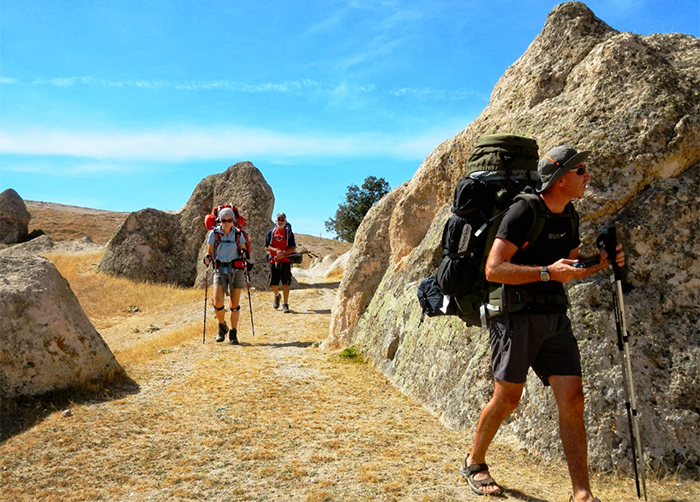An Academic Study on Those Who Walk the Phrygian Way
Academic Study Phrygian Way: There is little to no Academic studies on cultural routes in Turkey. As tourism literature is my field of study, I’ve tried to map the demographics and feedback of those who walked the Phrygian Way in my master thesis that I completed in 2019.
I want to share the findings of this study with you. Those who are interested in the subject can access my thesis very easily by entering the website of YÖK’s (Council of Higher Education) National Thesis Center and scanning my name as the author’s name.
The number of cultural routes is increasing every year. Cultural routes emerged for the first time in the world in 1987 with the Santiago de Compostela Pilgrimage Route. In Turkey, the first time began to spread in 1999 with the Lycian Way. As of 2021, there are a total of 23 cultural routes in Turkey. One of the cultural routes in Turkey is the Phrygian Way which is the subject of this article. The Phrygian Way is a long-distance walking and cycling route, which was completed in 2013, crosses the borders of 4 provinces (Ankara, Eskişehir, Afyonkarahisar and Kütahya) and has a length of 506 km, where many natural and cultural attractions can be seen together.
As a result of my study with 236 walkers who walked the Phrygian Way before, most walkers who experienced the Phrygian Way were 45 years and older (46.2%), and 43.6% of them were private-sector employees, 23.7%. Of them were employees of the public sector. And walkers described themselves as “travellers” and “backpackers.” When we look at the participants’ travel habits, they usually walk other cultural routes in Turkey, such as Carian Way, St. Paul Way and Lycian Way with their friends. It’s been determined that the travel motivations of those who walk the Phrygian Way can be examined in the dimensions of relaxation, experiential, personal/social growth, cultural knowledge and independence.
One of the most striking findings of my study is that the satisfaction level of those who walked the Phrygian Way was very high. According to the findings, the rate of meeting the expectations of the walkers was 95%, the rate of those who want to walk the route again was 92%, and finally, the rate of recommending the route to others was 98%. These rates reflect that the Phrygian Way has great potential, although it is a new cultural route. Therefore, it is clear that many more studies should be done academically.
I can say that the Phrygian Way, I heard and admired for the first time within the scope of my thesis, give unforgettable experiences in terms of the Phrygian heritage and ancient roads and their unique nature. I recommend that those who have not experienced the Phrygian Way yet and want to walk a different route, especially between March and November, walk this cultural route with all the marked trails close to settlements and water sources. I am sure that they will deeply feel the Phrygians’ exciting and mysterious world during their walk.
Research Assistant Muhammed KAVAK
Anadolu University- Faculty of Tourism






